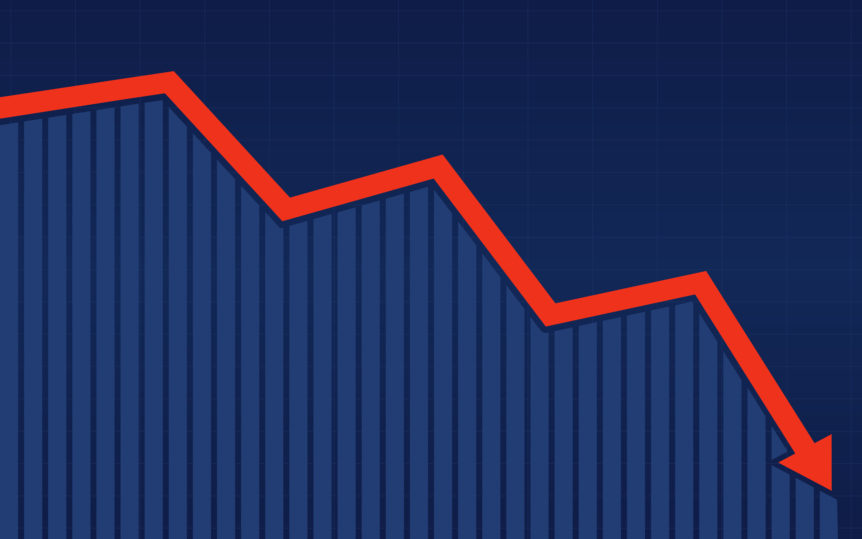By Gary Semmer for AssuredPartners The construction industry is facing a number of “external” challenges ranging from materials price inflation, supply chain delays, and labor shortages which translates into scheduling, productivity, and profitability issues. Although we have no control over these external factors, we can help our construction clients control the following equation: Total Cost of Risk (TCOR) Premiums + Deductibles + Risk Management Expenses/Construction Revenues= .0050% to 1.5% (acceptable range) and maintain a competitive advantage. Let’s explore the “Best Practices” of a Risk Management Program to achieve these results: See these results here>>>
News Release From OSHA & U.S. Department of Labor
By Kyp Ross for AssuredPartners On July 14th, 2022 the U.S. Department of Labor’s Occupational Safety and Health Administration (OSHA) issued a press release regarding an uptick in fatalities. The press release, titled “Alarming rise in trench-related fatalities spurs US Department of Labor to announce enhanced nationwide enforcement, additional oversight” announced that during the first half of 2022, 22 workers have been victims of deadly hazards involving a trench and/or excavation work. This number is alarmingly high, as there were a total of 15 fatalities in all of 2021. With this unfortunately high number, OSHA is evaluating the tools at their disposal to protect workers and keep safe working conditions. In additional to asking employers involved in trenching and excavating activities …
Captives: Is Company Size a Factor?
By Denise Gillin for AssuredPartners Captives have been a financial strategy for managing risk for decades. In the 1960s about 100 captives existed. Significant growth in this sector came in the 1970s as Bermuda became a leading captive domicile. Growth continued through the 1980s and 90s mostly due to the hard insurance market and increasing difficulty to find coverage for liability claims through traditional insurance. What initially started as a funding option for larger organizations’ property and casualty coverage needs has more recently changed to become more amenable to all business sizes as well as a mechanism to cover new and emerging types of risks. The most recent growth trend includes captives as a tool for employee health population management. …
Using Telematics to Improve Driver Safety
By Gina Ekstam for AssuredPartners The number of vehicle accidents continues to rise, putting people at risk and disrupting agribusiness operations. With the use of technology, however, it is possible to improve safety and enhance operations. As commercial ag operations have grown, telematics has become a cost-effective way to gather data about drivers, individual vehicles, or an entire fleet. Typically, data such as location tracking, driver behavior, and vehicle diagnostics are collected by GPS, dashcams, or sensors installed on the vehicle. By analyzing the data, it’s possible to prevent and resolve accidents. Addressing operator behavior, such as speed, acceleration rates, and hard braking, not only keeps drivers safe it can also help prevent vehicle damage. Safety training and safe driving …
Gavel Keeps Falling and General Liability is in the Crosshairs
By Alex Wright for Risk&Insurance Risk managers and their brokers are restructuring their liability programs as markets shift and underwriters take a closer look at exposures. The general liability market has changed beyond recognition since the start of the COVID-19 pandemic. Ever-increasing economic and social inflation, medical expenses and litigation financing have all resulted in spiraling claim losses and legal costs, which continue to outstrip rates. Added to that, sexual harassment cases are on the rise, and decades-old general liability policies have been exposed as many states have removed limitations on financial recovery and victims have been given more time to file or proceed with claims. Click for more information>>>
PFAS Liability Exposures Are Rising. What Manufacturing Entities Need to Know
By Autumn Demberger for Risk & Insurance “PFAS, also known as forever chemicals, are a group of widely used chemicals that serve as a coating to generally enhance or improve the durability of a product,” explained Brian Kramer, manufacturing practice lead at The Hartford. “These types of chemicals have been in use since about the 1930s, with the primary applications focusing on nonstick and waterproof coatings.” Many say PFAS are the “next asbestos,” but unlike its 1970s counterpart, PFAS are still manufactured in products overseas today, which can open companies up to liability and health-related claims. How can manufacturers mitigate the risk>>>
CEO Action for Diversity and Inclusion
By Jim W. Henderson for AssuredPartners I am proud to announce that AssuredPartners is taking an action-oriented step alongside a group of over 2,000 businesses in a collective commitment to make progress toward advancing diversity and inclusion in our workplace, communities and country. I am excited and inspired for us to join the CEO Action for Diversity & Inclusion™, the largest CEO-driven business commitment to advance diversity and inclusion within the workplace. By joining this pledge, we underscore AP’s commitment to diversity, equity, and inclusion. We are fostering a workplace environment where our employees can be their most authentic selves, share their unique perspectives, feel that they belong, and everyone will know their contributions are valued and respected. AssuredPartners is …
Cargo Losses Escalate as Thieves Target Cars, Electronics
By Claire Wilkinson for Business Insurance Cargo theft costs are rising in the U.S. as higher-value goods such as vehicles and electronics are targeted, and as inflation pushes up the cost of goods. Companies can take steps to reduce the risk of theft, including installing tracking technology and hard-locking devices, using teams of drivers, and avoiding theft hotspots, experts say. The Memorial Day weekend typically sees an uptick in cargo theft, with an average from 2017 to 2021 of 29 events per year over the holiday weekend. Read more, including steps to reduce risk>>>
Department of Labor to Tackle Long COVID Workplace Challenges
By Louise Ensola for Business Insurance The Office of Disability Employment Policy, Office of Workers’ Compensation Programs and other departments under the U.S. Department of Labor announced plans Tuesday to begin a “national online dialogue” to better understand the implications of long COVID in workplaces. As part of the initiative, the U.S. Centers for Disease Control and Prevention and the U.S. Surgeon General are asking the public to provide ideas to better support workers coping with long COVID symptoms, their co-workers and their employers. By some estimates, one in five people infected with COVID-19 in the U.S. may experience a wide range of symptoms for three months or more that include shortness of breath, fatigue, brain fog, heart palpitations, headaches, anxiety and depression, according to the …
Excess D&O Rates Fall as Competition Heats Up
By Judy Greenwald for Business Insurance Policyholders saw rate decreases of up to 35% in the July renewals for directors and officers liability risks, fueled by significant capacity in excess layers and increased competition, experts say. Companies that had experienced the biggest increases over the past four years are getting the largest decreases, with limits that were cut during the hard market being restored and retentions lowered. The softening market trend will continue at least through this year and into 2023, experts say. Certain lines, however, remain problematic, including cyber; environmental, social and governance risks; and cryptocurrency-related lines, they say. Read more here>>>










